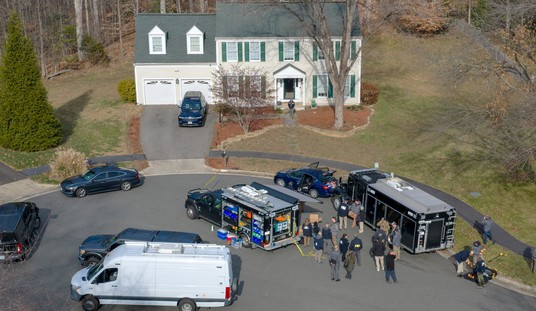“I watch the news with my family, and I see that Maliki is fighting the innocent people in Basra,” said Muhammad, 12. “I don’t understand it all, but it looks bad to me.”
So ends a weekend New York Times report on the violence currently raging in Basra and other parts of Iraq. And it’s an appropriate quote for the Times to use, because Muhammad’s sentiments neatly sum up its own attitude to this new outbreak of fighting: “We don’t understand it all, but it looks bad to us.”
Very few people understand exactly what’s going on in Iraq right now, although we do know that the people Prime Minister Maliki is fighting aren’t ‘innocent’. Long-standing inter-Shia rivalries are coming to the fore, but it’s not clear how much of the fighting is simply criminal gangs vying for power, to what extent the violence is being stoked by Iran, or what role the radical Shia cleric Moqtada Sadr is playing in events.
Given the lawlessness that has taken hold in Basra since last year’s precipitous British withdrawal from the city, and the importance of the area to the Iraqi economy – the area is home to the country’s only port, and important oil installations – an attempt to re-assert Baghdad’s authority was bound to be made sooner or later. And now that government forces have moved in, the Times is as usual putting its own unique spin on events. Today’s report, headlined ‘Assault by Iraq on Shiite Forces Stalls in Basra’, begins:
American-trained Iraqi security forces failed for a third straight day to oust Shiite militias from the southern city of Basra on Thursday, even as President Bush hailed the operation as a sign of the growing strength of Iraq’s federal government.
The Times manages to cram a whole lot of editorialising into that short intro. For most observers the fact that the Iraqi forces have been trained by American (and British) troops has no bearing whatsoever on the events in Basra, but the Times considers it noteworthy enough for the opening line of the story, and the implication is clear: all that American training has failed to lick the Iraqi army into shape, or, even worse it’s actually a contributing factor to the failure of government forces to subdue the insurgents.
And, needless to say, President Bush’s timing is off yet again, and he’s speaking with a reckless disregard for the facts on the ground.
So the Times considers the inability of the Iraqi army to bring law and order a city of more than two million people in three days a ‘failure’. I wonder how long they think it should take. The Iraqis are essentially carrying out a mini-counterinsurgency operation, putting into practice the very US training (itself based on hard-learned lessons) the Times is so derisive of. Were the Iraqis, or the Americans, to go storming into Basra with all guns blazing the Grey Lady would never let us hear the last of it.
But tactical considerations, and the complexities of inter-Shia rivalries, are of little interest to the Times. What’s important is that, in the words of young Muhammad, “it looks bad”. Violence in Iraq is back on America’s TV news programmes, and on the front pages of the papers.
Since the surge of US forces began to produce undeniable results last year, the Times, along with the other usual suspects in the anti-war media, has been frantically trying to change the narrative, and identify new metrics by which to measure American failure, both in Iraq and in the wider war on terror.
Among other things we’ve had the ‘lack of political progress’, Blackwater, waterboarding, and now the investigations over CIA interrogation tapes. And all the time the good news from Iraq has been going largely unreported, as the media loses interest in events on the ground.
The media appears to be failing to get its message of doom and gloom by other means through to the American people, however, with one recent poll showing Americans are increasingly optimistic about the outcome in Iraq – an optimism that’s matched by the Iraqi people.
But now the media once again has tangible bad news to report. As has often been the case in Iraq over the past five years, the situation in Basra and other militant Shia strongholds is likely to get worse before it gets better. If Sadr decides to fully join the fray, rather than cheering from the sidelines, US forces will finally have to confront him, and if they do it’s likely that he’ll suffer the same fate as Al Qaeda has in the Sunni provinces.
There’s no reason why the Iraqis and their US allies shouldn’t defeat this latest threat to the country’s future. If would be nice if the New York Times could see its way fit to supporting them for once, or at least refrain from greeting every new setback with barely-concealed glee.
Mike McNally blogs at Monkey Tennis Centre









Join the conversation as a VIP Member